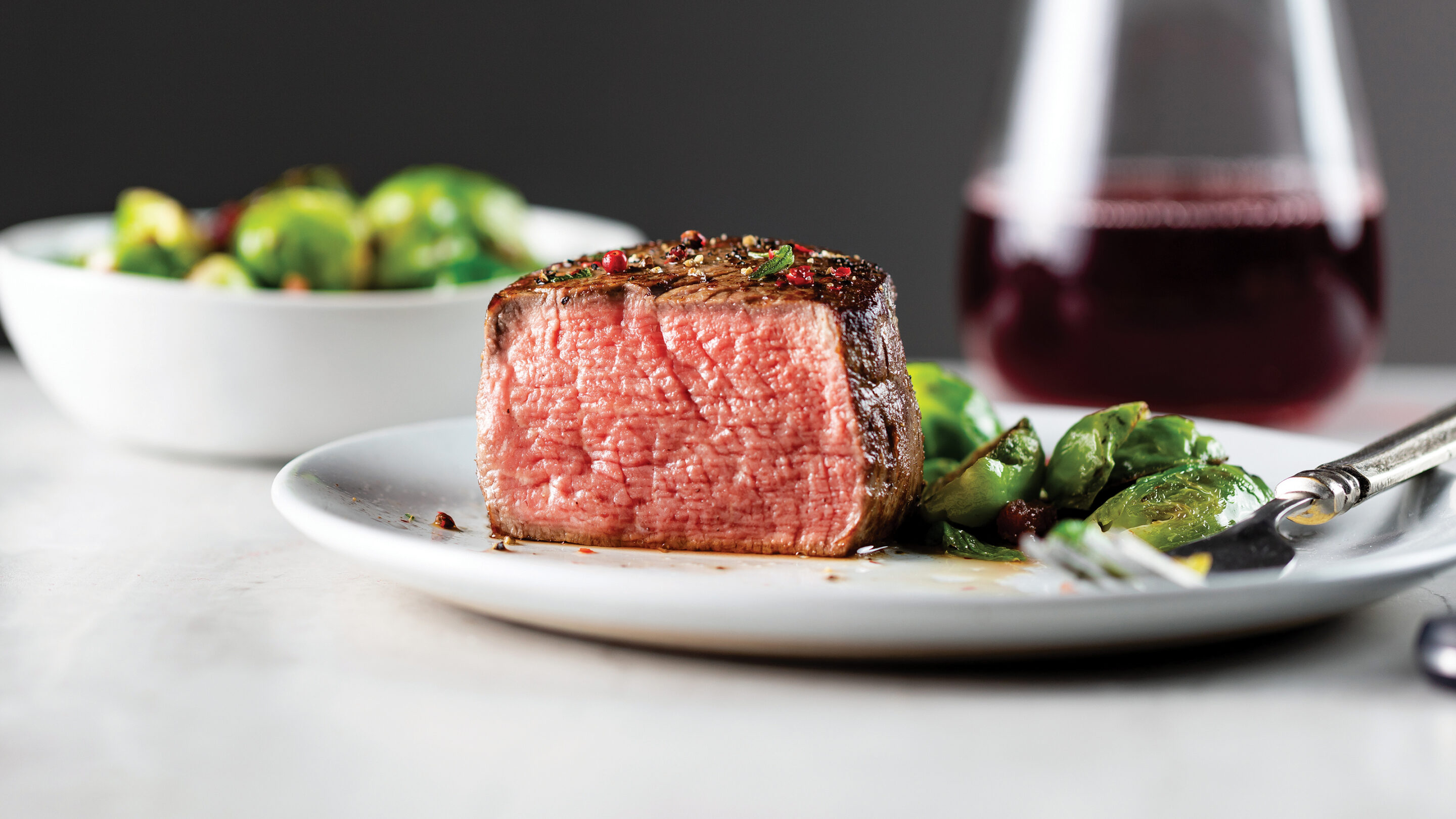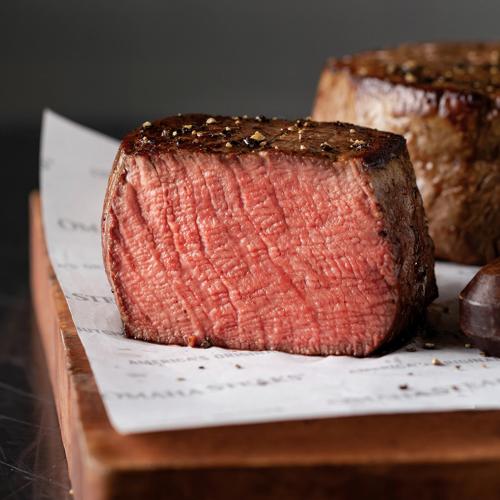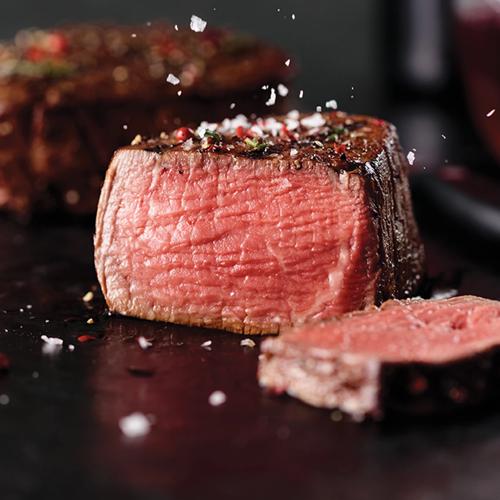The filet mignon is one of the most popular cuts of steak because of its fork-tender texture and decadent flavor. First referenced in 1906’s “The Four Million,” by O. Henry, the “dainty fillet” was the main course employed throughout the novel, underscoring moments of romance between two lovers. Now, more than a hundred years later, fillet de bouef is still found at the center of our most intimate evenings — whether it be Valentines seated in the finest of dining establishments or a rustic date night for two over the flames of a backyard barbeque.
Cooking filet mignon can be intimidating, but we’ll going to show you in 10 easy steps how to pan-sear filet mignon perfectly. Pan searing creates an amazing crust on the outside and a tender, juicy, and delicious center.
How to Pan-Sear a Filet Mignon
1. Start with a Well-trimmed, Aged Filet Mignon
For incredible results, it’s key to start with a phenomenal cut of beef. At Omaha Steaks, our beef is hand-selected for the highest quality, aged 28+ days for maximum tenderness, and expertly trimmed by master butchers. We offer an incredible selection of filet mignon – bacon-wrapped, Butcher’s Cut, Triple-Trimmed®, and Private Reserve®. Learn more about each filet mignon cut in our butchers guide.
2. Thaw Steak
Start by completely thawing your steaks using our steak thawing guide.
3. Bring Steaks to Room Temperature
Once fully defrosted, set them out at room temperature for at least 30 minutes to climatize before you begin cooking. Bringing your steak to room temperature allows the filets to cook more evenly for edge-to-edge perfection.
4. Season Steak or Dry Brine
Season your steaks with Omaha Steaks Seasoning or coarse sea salt and cracked pepper before putting them in your pan. If you have more time, you can dry brine your filet mignon to season and tenderize the steak. To dry brine, season the steak generously with salt on both sides and let it rest on a baking rack set over a baking pan in the refrigerator for at least one hour or even overnight. If you dry brine your steak, we recommend bringing it to room temperature before cooking.
5. Turn Stove on High and Preheat Skillet
Turn your stove on high before cooking because you want your skillet to be HOT! This will create an incredible crust on your steak. Preheat your skillet over high heat for at least 5 minutes. If you use a cast iron skillet, you will need to preheat the pan for at least 10 minutes.
6. Add High-Temp Oil
Add 1-3 tablespoons of high smoke point oil or fat, like grapeseed oil, canola oil, ghee or duck fat, to the preheated skillet. Let the oil or fat get hot.
7. Place Steaks in Pan
It’s time to cook! Carefully place each filet mignon in the hot pan. Leave at least one inch of space between each steak.
8. Cook Both Sides Evenly Using Omaha Steaks Cooking Chart or Mobile App Timer
Depending on the thickness of your filets and your desired doneness, cooking times vary. Use our cooking chart and steak doneness guide to help determine how to long to cook on each side. To help ease the cooking process, check out our Omaha Steaks mobile app with a built-in steak cooking timer that guides you through the pan-searing process.
9. Butter Baste the Steaks
Add butter and fresh herbs, including rosemary, thyme, fresh garlic, or your favorite compound butter, to your skillet. To baste your steaks, tilt your skillet towards you using an oven mitt and with a large spoon, continually baste the steaks with the butter in the pan. Basting your steak adds delectable moisture to the surface of your steak and infuses it with flavors. Continue basting until the butter smells nutty and begins to brown, about one minute.
10. Rest 5-10 Minutes
You’re almost done, we promise! Remove your steaks from the skillet and let your steak rest. This allows time for the steak’s juices to reabsorb and redistribute so that every bite is tender and delicious. Let your filets rest for 5 minutes per inch of thickness or 10 minutes per pound. Drizzle with butter from the pan and serve.
Enjoy your perfectly pan-seared filet mignon!
More Articles:



